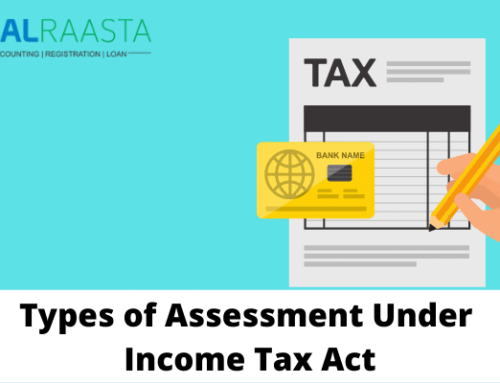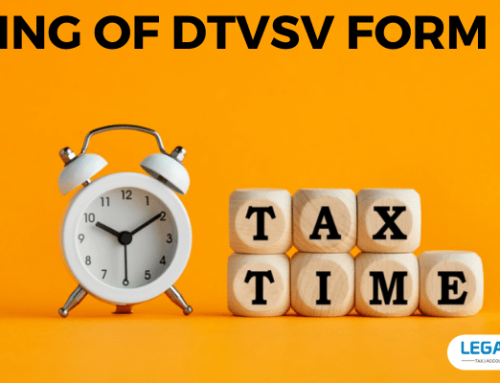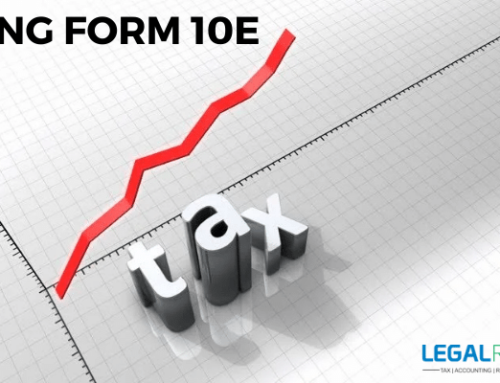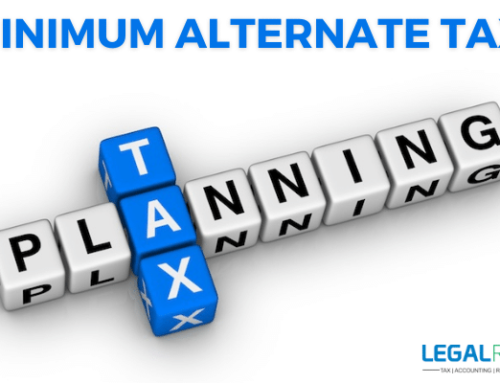Did you know that doing good deeds and being kind can help you save money on taxes? The Indian Income Tax Act, Section 80G, makes provision for this. To calculate your taxable income, you can deduct your donations to Central and State Relief Funds, NGOs, and other Charitable Trusts or institutions under Section 80G. In this post, we’ll explain how and when to deduct gifts from charitable trusts and non-profit organizations.
Charitable Trusts – A brief Introduction
Contents
- Charitable Trusts – A brief Introduction
- Income tax on Charitable Trusts or Institution
- How should income be applied to be exempt?
- What if 85% of income is not applied?
- Where should accumulated income be invested?
- Exemption, not to apply in certain cases
- Should a charitable organization or non-profit organization register with the IRS?
- Which form should you use to apply for an Income Tax Act registration?
- Is it necessary to have a trust deed in writing?
- When is it possible for a donor to claim a deduction under Section 80G of the Internal Revenue Code?
“The term ‘charity’ connotes benevolence in both thinking and deed. In the matter of Andhra Chamber of Commerce [1965] 55 ITR 722, the Supreme Court stated, “It involves a sense of assisting others rather than oneself” (SC).
Charity is a voluntary donation of money or goods to those in need. Efforts made in groups are always more fruitful. As a result, many Non-Governmental Organizations (NGOs) and non-profit corporations are constantly generating funds for charity purposes all over the world by founding either an institution or a trust.
The efforts of such institutions contribute significantly to the government’s economic development and social welfare goals. Their outreach and more localized approach aids in identifying those in need and providing assistance. As a result, the Indian government has granted charity organizations a variety of tax incentives and exemptions, the most notable of which is Section 80G.
Income tax on Charitable Trusts or Institution
The income tax on several forms of charity trusts income is detailed below:
| Category of income | Income subject to tax | Taxability |
| Donations/voluntary contributions | Contributions made with the intention of becoming part of a trust or institution’s corpus. | Exempt* |
| Voluntary contributions that are not directed in any way | Forms a part of the income from the trust-owned property. | |
| Donations, where the donee does not keep track of the donor’s identity or any other details, are known as anonymous donations. | Gifts in excess of the greater of:
i) 5% of total donations received by the trust or ii) Rs 1,000,000 |
Taxed at 30% |
| On the same day, an anonymous donation was received by a trust that had been established solely for religious and Charitable Trusts purposes. | Taxable in the same way as the above-mentioned voluntary contributions (without explicit direction). | |
| Property held in trust for charitable or religious purposes generates income. | In India, income is used for philanthropic or religious purposes. | Exempt* |
| In India, income has been accumulated or set aside for charity or religious purposes. | Exempt* to the extent that 15% of such income is exempt. This means that in India, at least 85 percent of property revenue must be used for charity and religious purposes, with the remaining 15 percent accumulating or set aside. [For more on 85 percent, see the remark below.] | |
| Income from property held in a trust for a philanthropic purpose that promotes international welfare and is of interest to India | The CBDT has instructed that such revenue not be included in the overall income of the trust, either by general or particular order. | Exempt* |
| Gain on a trust asset retained in its entirety | The net consideration is used entirely to purchase another capital asset. | The entire capital gain is considered to have been used for charity or religious purposes and is thus exempt*. |
| Net consideration is utilized partially for acquiring another capital asset | Capital gain used in excess of the cost of the old asset transferred is exempt* if it was used for charity or religious purposes. |
*The exemption is only available to charitable/religious trusts or institutions that are registered under Section 12AA.
How should income be applied to be exempt?
A trust must devote at least 85 percent of its income to charitable or religious purposes in India in order to be exempt. The following items are included in the charitable purpose definition established by tax laws:
- Poor relief
- Education
- Yoga
- Medical relief
- Environmental preservation (monuments, sites, or objects of artistic or historic interest)
- Any other object of great public utility that is advanced. However, any activity in the nature of trade, commerce, or business, or any activity of rendering any service in relation to any trade, commerce, or business, for a fee or other consideration, is not considered to be for charitable purposes, regardless of the nature of use or application, or retention of the income from such activity, unless:
- such activity of trade/commerce/business is undertaken in the course of the actual carrying out of such advancement; or
- the total receipts from such activity/activities throughout the financial year do not exceed 20% of the trust or institution’s total receipts during that financial year.
Furthermore, income used for the acquisition of a capital asset, repayment of a loan used for the purchase of a capital asset, revenue expenditure, and contribution to a trust registered under Section 12AA and Section 10(23C) would be recognized as used for charitable purposes and thus tax-free.
The term “religious purpose” is not defined in the Act. Religious goals are inextricably linked to religion and are a matter of faith for individuals and societies. The advancement, support, or propagation of religion and its beliefs are all examples of religious purposes. Though it may be for the benefit of a certain religious community or caste, the income of a religious trust or organization is exempt.
Only public religious trusts are eligible for the exemption under Section 11, not private religious trusts.
What if 85% of income is not applied?
If a trust or institution is unable to put 85 percent of its revenue from property under its control to good use, the income is nonetheless exempt if the following requirements are met.
- In certain circumstances, the income is judged to have been donated to charity.
- If 85 percent of revenue is not applied or judged to be applied, the trust may amass such unapplied income under certain conditions in order to claim the exemption.
Let’s take a closer look at the two circumstances.
Income regarded to have been applied
- the income was not received in full or in part during the preceding year; or
- If the assessee has any other cause, he or she has the option to:
- use the revenue mentioned in clause (i) for the purposes mentioned in subparagraph during the previous year in which it was received or the year immediately succeeding the said previous year.
- use the revenue mentioned in subsection (ii) for such purposes in the year after the year in which the income was earned.
The trust must utilize this option on Form 9A, which must be submitted electronically with or without a digital signature within the time limit for filing an income tax return under section 139. (1).
85 percent of the trust’s income has been accumulated:
It is permissible to collect or set aside a minimum of 85 percent of a trust or institution’s income if it has not been applied or deemed to have been applied as described above. And, if the following requirements are met, such income will be exempt.
- On or before the due date for submitting the return of income, such trust or institution electronically submits Form No. 10 – notice of accumulation of income by charity trust or institution.
- State the reason for the revenue being accumulated or set aside.
- Income shall not be accumulated for more than 5 years, and income accrued or set aside due to a court order or injunction shall be omitted from the computation of the 5 years.
- The money that has been saved or accumulated is invested or placed in a specific manner.
If income is not accumulated as described above, it is taxed as follows:
| Category of violation | Year of taxation |
| If money is used for something other than philanthropic or religious purposes, | The year in which the application was submitted |
| Income is no longer invested according to the plan. | Year in which it is no longer invested in the manner described |
| Not used for the purpose for which it was collected or set aside for a period of up to six years | 6th year |
| Donated to a trust established under Section 12AA or 10 of the Internal Revenue Code (23C) | Year in which revenue is contributed in this manner |
Where should accumulated income be invested?
As previously stated, the revenue of not more than 15% can be accumulated or set away for use in India. Furthermore, one can save or set away 85 percent of one’s income that is not used for the chosen purpose for use in India. The following modes of investment must be used to make such accumulations:
- Purchase of a government-issued savings certificate/UTI
- Make a deposit in a post office savings account, a scheduled bank account, or a cooperative bank account.
- Investing in real estate (both movable and immovable)
- Investing in any money-creating and issuing securities issued by the federal or state governments
- Debentures issued by a company that is fully and unconditionally guaranteed by the federal or state government
- Deposit or investment in a public corporation
- Make a deposit with or invest in bonds of a financial organization or public firm (registered in India) that provides long-term financing for India’s industrial development.
Exemption, not to apply in certain cases
The following trust/institution incomes are not eligible for an exemption:
- The entire income from the property is held in trust for private religious purposes that are not beneficial to the general public.
- The entire income of charitable trusts or institutions is created to help a certain religious community or caste in an indirect way.
- Entire income, if the charity or religious trust or institution’s income (wholly or partially) and property are used for the benefit of a specific person**
- The income of a charity or religious trust is not invested according to the terms of the trust.
- The value of medical or educational services provided to a specific person by any charitable or religious trust that operates a hospital, medical institution, or educational institution**
- Any business profits and gains, unless the business is incidental to the trust/aims institution’s and separate books of account are kept for it.
*The following people have been designated for this purpose:
- Trustor institution’s author or founder
- Anyone who has made a major donation up to the end of the financial year, that is, a contribution of more than Rs 50,000
- If the creator, founder, or individual is a member of a HUF, the members of that HUF.
- Trustee/manager of the trust/institution, regardless of their official title;
- Any relative of any of the above-mentioned author, founder, the person who has made a significant contribution, trustee, or management
- Any firm in which any of the above-mentioned individuals has a significant stake, i.e., a total contribution of more than 50% up to the end of the fiscal year
Should a charitable organization or non-profit organization register with the IRS?
Yes, in order to claim tax exemption, the charity institution or NGO must register under the Income Tax Act.
Which form should you use to apply for an Income Tax Act registration?
The NGO or benevolent institution must submit a registration application in Form No. 10A.
Is it necessary to have a trust deed in writing?
The trust deed should be written and include the signatures of the trustees and the trust’s author.
When is it possible for a donor to claim a deduction under Section 80G of the Internal Revenue Code?
Donations to registered Charitable Trusts or institutions or non-profit organizations can be deducted under section 80G of the Income Tax Act.
Related Blogs:
Indian Trusts Act – Objectives, Registration of trust, Formation & Taxation






